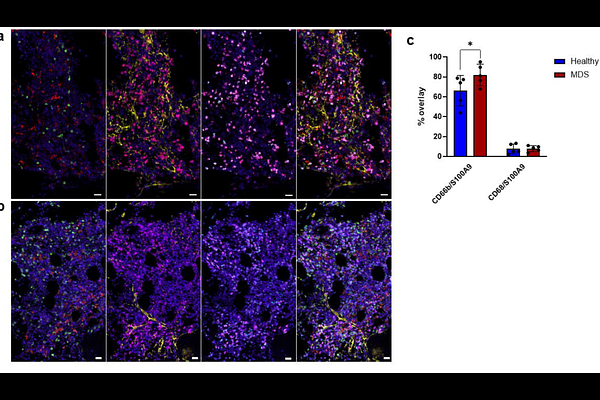Preclinical Efficacy of Tasquinimod in Myelodysplastic Neoplasms: Restoring Erythropoiesis and Mitigating Bone Loss

Preclinical Efficacy of Tasquinimod in Myelodysplastic Neoplasms: Restoring Erythropoiesis and Mitigating Bone Loss
Wobus, M.; Weidner, H.; Wehner, R.; Baumann, A.-L.; Moebus, K.; Balaian, E.; Toerngren, M.; Vahtola, E.; Eriksson, H.; Winter, S.; Platzbecker, U.; Chavakis, T.; Hofbauer, L. C.; Rauner, M.; Bornhaeuser, M.; Sockel, K.
AbstractMyelodysplastic neoplasms (MDS) are clonal disorders characterized by ineffective hematopoiesis, dysplasia, and a risk of transformation into acute myeloid leukemia. MDS is also associated with a higher incidence of osteoporosis, suggesting a complex interplay between hematopoiesis, the bone marrow (BM) microenvironment, and bone homeostasis. Targeting inflammation has emerged as a promising therapeutic strategy, particularly in lower-risk MDS. Tasquinimod (TASQ) is a small-molecule inhibitor of the inflammatory alarmin S100A9, blocking its interaction with TLR4 and RAGE receptors. We investigated the efficacy of TASQ in modulating inflammation and improving disease phenotype using in vitro and in vivo MDS models. Immunofluorescence staining of human BM identified neutrophils and macrophages as primary S100A9 sources. Exposure of mesenchymal stromal cells (MSCs) to S100A9 induced TLR4 downstream signaling, resulting in increased expression of IRAK1, NF-kappaB-p65, IL-1beta, IL-18, caspase 1 and PD-L1. These effects were effectively abolished by TASQ. Additionally, TASQ restored the disturbed MSC-mediated hematopoietic support, as demonstrated by increased numbers of cobblestone area-forming cells and colony-forming units. In NHD13 MDS mice, TASQ (30 mg/kg, 12 weeks) improved hemoglobin and red blood cell counts, but exerted no effect in wild-type (WT) mice. Additionally, TASQ improved bone microarchitecture by increasing trabecular number and bone volume, likely a result of reduced osteoclast activity. Our findings suggest that TASQ mitigates inflammasome activation in the MDS BM, improving erythropoiesis and bone health. These results provide a necessary preclinical basis for clinical trials in lower-risk MDS patients, in whom anemia and osteoporosis often coexist.